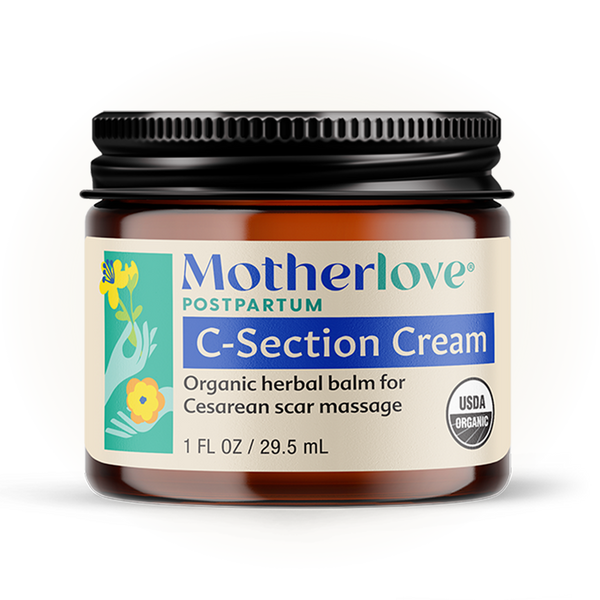Think it’s not possible to experience the magic of holding your baby skin-to-skin and breastfeed in the operating room after a cesarean birth? We are happy to share that, in many cases, it is possible!
Though it is not (yet) common practice, a growing number of providers are embracing skin-to-skin and breastfeeding immediately following a c-section. This is part of a movement toward a more family-centered (or “gentle”) cesarean birth experience. We can’t guarantee that your provider will agree to skin-to-skin and breastfeeding immediately following a c-section birth, but we are happy to share some tips for increasing the chances that you will have this opportunity.
WHY IS SKIN-TO-SKIN BENEFICIAL?
Research has shown that immediate or early skin-to-skin contact after a cesarean birth may increase breastfeeding initiation, decrease time to the first breastfeed, reduce formula supplementation in hospital, increase bonding and maternal satisfaction, maintain the temperature of newborns and reduce newborn stress, as well as reduce NICU admissions. That's probably why hospitals nationwide are moving to provide earlier skin-to-skin contact for babies born by c-section. According to data from the CDC, the percentage of hospitals reporting that most patients experience skin-to-skin contact for at least 30 minutes within 2 hours of uncomplicated cesarean birth rose from 32% in 2009 to 70% in 2015. (Data on the location of that skin-to-skin time, and on the prevalence of breastfeeding in the operating room is not available).
PLANNING FOR SKIN-TO-SKIN
Whether you’re expecting a planned cesarean or want a back-up plan just in case you have an unplanned cesarean, it’s worth doing some exploring and planning. Here are some tips:
- Ask your hospital whether they practice skin-to-skin and breastfeeding in the operating room after a cesarean birth. If your hospital does not permit this and you have choices regarding where you deliver, call other hospitals to learn about their policies, and consider changing to a different hospital. Be sure to discuss this with your obstetrician or midwife to understand how they practice, since it may vary by provider.
- If your hospital does not permit skin-to-skin and breastfeeding immediately after a c-section birth, share some evidence-based information from the Academy of Breastfeeding Medicine. Their protocol states: “Post-cesarean-birth babies will be encouraged to breastfeed as soon as possible, potentially in the operating room or recovery area.”
- Your providers may also be interested in this first person account of how the practice change was made from the American College of Obstetricians and Gynecologists (ACOG) and this article for tips on how to make it happen.
- Build skin-to-skin and breastfeeding in the operating room into your birth plan. See this post on writing a family-centered cesarean birth plan for a comprehensive list of requests. Here are some statements you may want to include:
“I do not want my arms strapped down during the operation.”
“I would like the IV catheter, oximeter, and blood pressure cuff all placed on my (non-dominant) arm to give me a completely free arm to touch my baby.”
“I would like ECG leads to be placed on my back, to make my chest free for skin-to-skin contact.”
“I would like to hold my baby skin-to-skin and to breastfeed in the OR. I may need help doing this from my partner or a nurse.”
“Please don’t swaddle my baby so that he/she can be skin-to-skin with me. I’d like my baby to be able to move and I’d like to see him/her unobscured. To keep us warm, once my baby is on my chest you can cover both of us with a warm blanket.”
- Plan to have help with positioning, either from your partner or a nurse. You will be lying flat with your baby on your chest, and you may not have full use of your arms or may be groggy due to medications. Your helper should be prepared to support and monitor the baby to keep her stable on your chest, and to make sure that the baby’s airway is clear.
- And if it is just not possible for you to hold your baby skin-to-skin and breastfeed immediately after your c-section, research shows benefit to your partner holding your baby skin-to-skin. One study showed that infants held skin-to-skin by fathers after c-sections stopped crying, became calmer, and reached a drowsy state earlier than infants placed in a cot. So you may want to add this sentence to your birth plan as well:
“If I am physically unable to hold my baby skin-to-skin even with support, I would like my partner/other support person to hold our baby skin-to-skin as soon as possible.”
It's never too early to prepare for your different birthing options. Understanding your rights and documenting your wishes can help experience the magic of birth.





